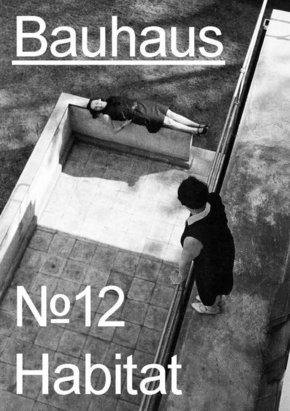| Verlag | Spector Books |
| Auflage | 2020 |
| Seiten | 190 |
| Format | 21,1 x 1,2 x 29,7 cm |
| Gewicht | 627 g |
| Reihe | bauhaus. Die Zeitschrift der Stiftung Dessau 12 |
| ISBN-10 | 3959053991 |
| ISBN-13 | 9783959053990 |
| Bestell-Nr | 95905399A |
Wohnen ist mehr als ein funktionales Dach über dem Kopf. Mit der "Charter of Habitat" forderten junge Architekt_innen beim CIAM-Kongress 1953 eine radikale Wende: weg vom Dogma des Funktionalismus und Universalismus. Informelles Bauen, Wohnen als soziale Praxis, Architektur als gemeinschaftsstiftende Gestaltung. Im Begriff "Habitat" bündeln sich die Debatten der Nachkriegsmoderne zur Neujustierung von Architektur und Städtebau. Er steht für eine ganzheitliche Betrachtung von Behausung, Mensch und Umwelt. Bauhaus #12 widmet sich deshalb dem "Habitat" sowohl aus historischer als auch zeitgenössischer Perspektive, weil gerade die Wohnungsfrage und die Klimakrise uns als globale Gemeinschaft heute herausfordern. Die Zeitschrift begibt sich auf die Suche nach Alternativen zur funktionalistischen Wohnmaschine in den 1920er Jahren am Bauhaus und anderswo, in der Nachkriegsmoderne und heute.Dwelling is more than just having a functional roof over your head. At the CIAM Congress in 1953, a group of young architects produced a Charter of Habitat calling for a radical shift away from the dogma of functionalism and universalism: informal building, dwelling as a social practice, architecture as a mode of design that generates community. The term "habitat" constitutes a pooling of the post-war modernist debates on recalibrating architecture and urban planning. It embodies a holistic view of housing, human beings, and the environment. With this in mind, Bauhaus #12 focuses on "Habitat" from both a historical and a contemporary perspective, because housing and the climate crisis are the very issues that challenge our global community today. The magazine goes in search of alternatives to the functionalist housing machine that was evident in the 1920s at the Bauhaus and elsewhere and which continued as part of the post-war modernist movement and is still prevalent today.

